
1 - Why Alerts Matter for Travelers
A Guide to Understanding US National Park Alert Systems starts with a simple truth: conditions in America’s parks can change in minutes. A bluebird morning can become a flash-flood afternoon; a quiet trail can close for wildlife activity; a scenic road can shut due to rockfall or wildfire smoke. Knowing how alerts are created, prioritized, and distributed helps you keep the trip safe without losing the sense of adventure.
1.1 Safety Meets Experience
The best trips balance spontaneity with situational awareness. Alerts aren’t trip-killers; they are decision tools. Used well, they help you pivot to a sunrise on a different overlook, swap a canyon hike for a high-country lake, or redesign a loop to catch golden hour on the “open” side of a storm system.
1.2 Who Issues What
Inside a park, rangers post operational alerts (roads, trails, facilities). Regionally, emergency managers push public safety warnings. Weather services broadcast severe weather and fire weather statements. Together, these streams form the practical backbone of US National Park alert systems.
2 - How Park Alerts Are Structured
Most parks use a tiered approach so travelers can quickly gauge urgency and scope. While terminology can vary by location, the structure is intuitive once you’ve seen it in action.
2.1 Urgency Levels
Advisory flags lower-impact updates (construction delays, seasonal services). Warning indicates higher risk (active flood potential, bear activity near campgrounds). Closure is definitive—an area, road, or facility is off-limits until lifted.
2.2 Geographic Scope
Alerts can target a single trail, a district (like a canyon or rim), or the entire park. Reading the scope line saves a trip—sometimes only one segment is affected and alternatives remain wide open.
2.3 Time Window
Every alert should show when it was posted and when it will be reevaluated. For dynamic hazards (floods, winter storms, wildfires), reevaluation times matter more than the original post date.
3 - Channels You Should Monitor
Because A Guide to Understanding US National Park Alert Systems is about staying ahead, it pays to diversify how you receive updates.
3.1 Park Pages and On-Site Signage
Official park pages and entrance stations display high-priority notices. Trailhead kiosks often host the latest wildlife or rockfall advisories—snap a photo before you hike.
3.2 Regional Emergency Alerts
County and state emergency services feed mobile alerts for evacuations, flash floods, and road closures that may include park lands. These messages complement, not replace, park notices.
3.3 Weather and Fire Intelligence
Mountain storms and desert monsoons move fast. Check forecasts and fire updates every morning and again mid-day in volatile seasons. A quick second look can mean the difference between a perfect slot-canyon day and a dangerous one.
4 - Decoding Common Alert Types
Here’s how travelers interpret the most frequent notices and adjust plans without sacrificing quality.
4.1 Flash Flood Risk in Canyon Parks
Alerts will emphasize storm cells upstream from narrow canyons. Translation: even if skies above you look calm, water can arrive as a fast-moving surge. Swap the slot for a rim trail, schedule canyons at dawn, and keep a generous weather buffer.
4.2 Wildlife Activity and Seasonal Closures
Bear or raptor-nesting advisories typically restrict food storage or human presence in specific corridors. Upside: these closures protect both wildlife and your experience—adjacent zones often feel quieter and wilder.
4.3 Wildfire, Smoke, and Air Quality
Fire alerts range from planned burns to active incidents. Visibility and health guidance accompany smoke statements. Plan photo days when dispersion improves; pick waterfalls, lakes, or museums when the haze thickens.
4.4 Winter Roads, Chains, and Icy Trails
Mountain parks post chain requirements, intermittent gate hours, and avalanche control windows. Build a “bluebird backup” plan—shorter hikes near plowed corridors, snowshoe loops, and sunrise viewpoints reachable by maintained roads.
5 - Real Itineraries That Adapted
These short stories show how travelers used US National Park alert systems to improve their time in the parks.
5.1 The Canyon Pivot
A couple aiming for a famed slot received a morning alert of elevated flood risk. Instead of canceling the day, they moved to a mesa-top loop with wildflower meadows. Storm anvils fired at sunset and their photos—lightning over red rock—became trip favorites.
5.2 The Smoke Window
During late-season fires, a family layered air-quality updates into their plan. When dispersion improved at noon, they shifted the scenic drive and photographed mirror-still reflections by evening. The “plan-late, shoot-late” tactic saved the day.
5.3 The Winter Sunrise
With a pre-dawn ice advisory, a solo traveler postponed a steep hike and chose a plowed overlook. The sky went magenta, the valley cloud-filled, and microspikes came out for a short, safe stroll along a sun-warmed rim.
6 - Pro Planning Workflow
Think of A Guide to Understanding US National Park Alert Systems as a checklist you can reuse for any park.
6.1 Before You Go
Identify likely seasonal hazards (monsoon, snow, fire). Mark alternative trails by elevation and aspect. Reserve lodges or camps with flexible terms. Build a “Plan A/B/C” grid so a single closure doesn’t stall the day.
6.2 Each Morning
Scan new alerts, cross-check weather and air quality, and confirm road status. Adjust start times to beat heat or storms and pack for the day’s specific risks (extra water, layers, traction, or sun protection).
6.3 On the Trail
Reassess clouds, runoff, wind, and wildlife signs at junctions. If a posted notice says “Do not proceed,” don’t negotiate with it—reroute. The best photos often come from the path you didn’t expect to love.
6.4 With Kids or Multi-Generational Groups
Make alert checks part of the morning ritual and celebrate the pivot. Turning “closure” into “secret picnic” keeps morale high and teaches smart outdoor habits.
7 - When to Call In Experts
Complicated logistics—shoulder seasons, permit lotteries, snow and fire variability—benefit from specialist help. If your dream trip spans multiple parks across shifting conditions, planning support can protect your time and elevate the experience. For bespoke routing, backup lodging strategies, private guiding, and day-by-day contingency mapping, consult 【Refined Travel 】 for tailored park itineraries that stay flexible when alerts change.
7.1 Your Next Step
If this guide clarified how US National Park alert systems work, use that momentum. Sketch your Plan A/B/C, note seasonal risks, and let experts fine-tune the details. Ready to transform awareness into an unforgettable journey? Explore options with 【Refined Travel 】 and secure the dates, guides, and viewpoints that match your style.







 Big Lake Campground4.0 (33 reviews)
Big Lake Campground4.0 (33 reviews)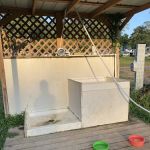 Travelers Campground4.0 (723 reviews)
Travelers Campground4.0 (723 reviews)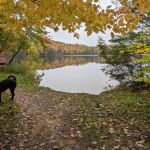 Quartz Lake Campgroup5.0 (3 reviews)
Quartz Lake Campgroup5.0 (3 reviews)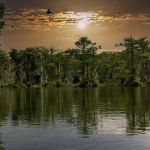 Dubuisson Trailer Park3.0 (60 reviews)
Dubuisson Trailer Park3.0 (60 reviews)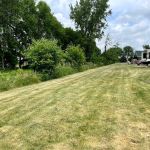 Green Acres RV Park4.0 (26 reviews)
Green Acres RV Park4.0 (26 reviews) U.S. Forest Service4.0 (2 reviews)
U.S. Forest Service4.0 (2 reviews) Exclusive Travel Packages for First-Class Travelers: A Guide to Luxury Vacations
Exclusive Travel Packages for First-Class Travelers: A Guide to Luxury Vacations Refined Travel Experiences in Southeast Asia: Explore Luxury & Unique Destinations
Refined Travel Experiences in Southeast Asia: Explore Luxury & Unique Destinations How to Make the Most of Luxury Vacation Deals: Expert Tips for Savvy Travelers
How to Make the Most of Luxury Vacation Deals: Expert Tips for Savvy Travelers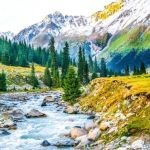 How to Enjoy a Refined Travel Experience in the Mountains
How to Enjoy a Refined Travel Experience in the Mountains Refined Travel Itineraries for Art and Culture Lovers: Explore the World of Art and History
Refined Travel Itineraries for Art and Culture Lovers: Explore the World of Art and History Most Luxurious Destinations for Honeymooners: Top Spots for Romance and Luxury
Most Luxurious Destinations for Honeymooners: Top Spots for Romance and Luxury